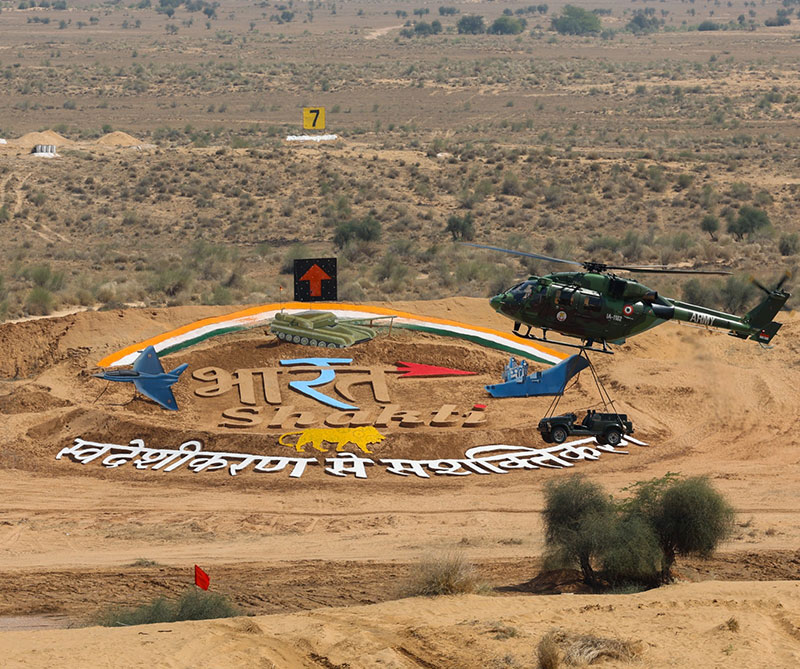Wrong War
Pravin Sawhney
A month after the Indian Air Force conducted its Exercise Vayu Shakti in the desert of Pokharan with elements of the Indian Army to demonstrate ‘jointness’, the latter returned the favour in full measure. The Indian Army conducted Exercise Bharat Shakti in Pokharan. Going one-up on the IAF, it told the media that its exercise was a tri service endeavour. While some elements of the IAF were visible in the sky over Pokharan, the Indian Navy was apparently also conducting some manoeuvres in the sea coinciding with the land exercise, which showcased simulated ground-based firing, obstacle fording and tank manoeuvres.

The star attraction was the Bharat Shakti artistic installation in sand showcasing models of a tank, a fighter and an aircraft carrier with ‘Swadeshikaran se Sashastikaran’ (empowerment through indigenisation) emblazoned across it. That this was the star of the exercise was evident from the fact that most of the action took place around or over it, so that it remained in all photo frames. Even Prime Minister Narendra Modi who took stock of India’s military preparedness by witnessing Bharat Shakti, which translates into India’s power, posed extensively with the installation which effectively encapsulated his slogan of ‘Aatmanirbhar Bharat’. A remarkable coincidence two months before the General Elections.
Interestingly, the official press release claimed that ‘Bharat Shakti will simulate realistic, synergised, multi-domain operations displaying integrated operational capabilities of the Indian Armed Forces to counter threats across land, air, sea, cyber, and space domains.’
Notwithstanding the gaps between the claims, the demonstration, and the exercise, it was evident that India continues to prepare for a hugely outdated war. This is deeply worrying, especially when India’s primary threat, the PLA, is at the cutting edge of modern warfare in technology, war concepts, capabilities, and capacities. Worse, there is a standoff at the Line of Actual Control for four years.
Before analysing the Indian military narrative, a good start would be to use the Pentagon prism to know PLA’s modern war capabilities, which Indian is also up against. By 2010, the Pentagon was aware that China had operational systems (software networks which connect all war domains) and guided munitions that were as capable as its own. It could close the kill chain as quickly as the US military. The PLA could do stand-off precision attacks at long ranges as good as the US military with its indigenous mortars, rockets, missiles, and artillery projectiles most of which were guided. Coupled with increasing miniaturization, guided weapons brought unprecedented lethality at long ranges. Once this realisation came, there were brainstorming sessions in the Pentagon on how to offset PLA’s combat advantage. Finally, in 2014, the Pentagon announced its third offset strategy by which the PLA advantage was sought to be outmatched by use of Artificial Intelligence (AI) and autonomy by the US military.
Meanwhile, China in 2015 did two things: it announced its ‘Made in China’ programme to focus on key emerging technologies including AI, and the PLA declared its major structural reforms. Both programmes created challenges for the US military which had concluded
Subscribe To Force
Fuel Fearless Journalism with Your Yearly Subscription
SUBSCRIBE NOW
We don’t tell you how to do your job…
But we put the environment in which you do your job in perspective, so that when you step out you do so with the complete picture.







